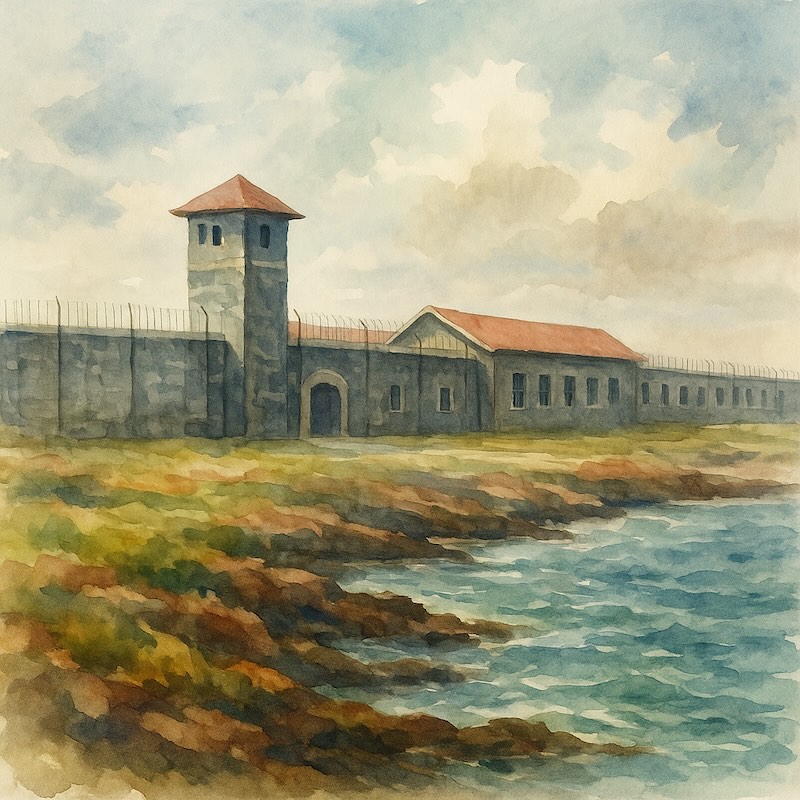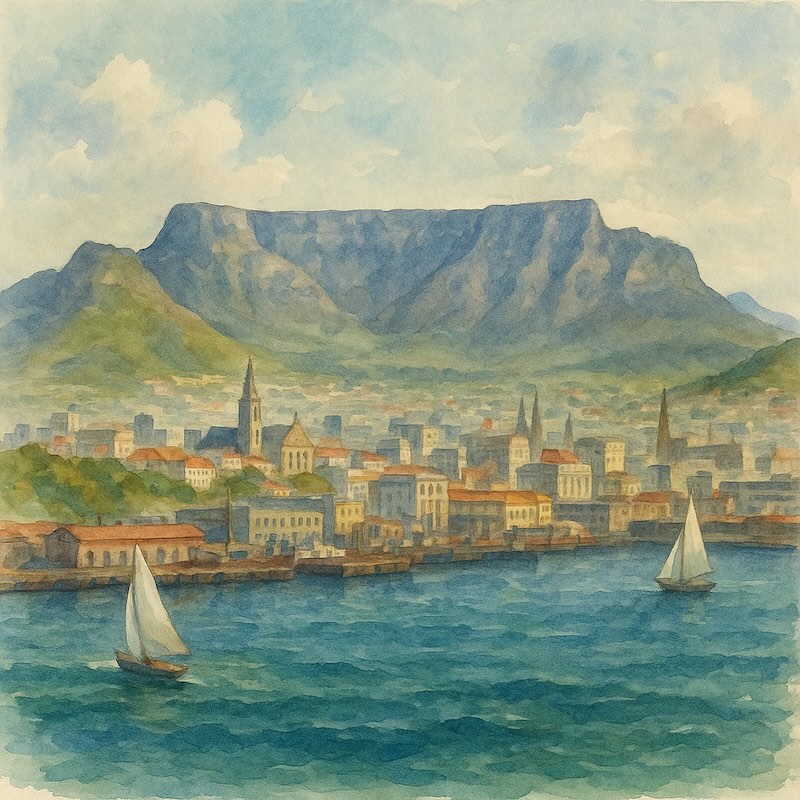Level 1 Reader
524 Words
A Boy in South Africa
Nelson Mandela was born in South Africa. He was born in a small village in 1918. His family was not rich. They lived in a round house with a thatched roof. Young Nelson liked to play outside. He played with sticks and ran in the fields. His father was a leader. He helped the people in their village. Nelson listened to many stories. He liked stories about brave people.
School and a New Name
Nelson went to school. At school, the teacher gave him a new name. His new name was Nelson. This was a normal thing in South Africa at that time. Nelson liked school. He wanted to learn more. He went to college. He studied law. He wanted to help people.
A Country with Rules
South Africa had many unfair rules. These rules were called apartheid. Black people and white people lived apart. They went to different schools. They sat in different buses. They could not live in the same areas. Nelson did not like these rules. He wanted to change them. He wanted all people to be free.
A Strong Voice
Nelson spoke to many people. He said, “These rules are not right!” Many people listened to him. He marched in the streets. He talked to leaders. He asked for change. But the government said “No.” They said Nelson could not speak. They said he could not lead.
Prison Years
One day, the police came. They took Nelson away. He went to jail. He stayed in jail for 27 years. That is a long time. He lived on a small island. He worked every day. He broke rocks. He could not see his family much. But he did not give up. He still believed in peace and freedom.

Freedom and Forgiveness
In 1990, Nelson was free. He walked out of jail. Many people cheered. They waved their hands. They sang songs. Nelson was not angry. He said, “Let’s forgive. Let’s work together.” He wanted peace. He did not want to fight.
A New President
In 1994, Nelson Mandela became president. He was the first Black president of South Africa. People were happy. They danced in the streets. They said, “We are free!” Nelson worked hard. He wanted people to live together. He wanted children to go to school. He wanted jobs for all.
A Hero for the World
Nelson Mandela helped not only South Africa. He helped the world too. He said, “Peace is better than war.” He said, “Love is better than hate.” People all over the world loved him. He got many awards. He got the Nobel Peace Prize.
A Long Life
Nelson got old. He smiled often. He saw children laugh. He saw people shake hands. He died in 2013. He was 95 years old. The world cried. But people also smiled. They said, “Thank you, Nelson Mandela.”
Remembering Nelson
Today, we remember Nelson Mandela. He showed us how to be strong. He showed us how to be kind. He showed us how to forgive. He is a hero. He is a man of peace. He is a light for the world.
Level 2 Reader
594 Words
A Boy from the Countryside
Nelson Mandela was born in 1918 in a small village in South Africa. His birth name was Rolihlahla Mandela. He was part of the Xhosa people, and his father was a local chief.
Mandela grew up in the countryside. He looked after animals and played with other children. Life was simple, but Mandela loved learning. He went to school, where a teacher gave him the name “Nelson.” That was a common practice at the time.
Learning About Injustice
As Mandela grew older, he saw that Black people in South Africa were treated badly. They could not vote. They had to live in special areas called “townships.” They could not go to the same schools or use the same buses as white people.
This system was called apartheid, which means “separateness.” The laws of apartheid made life very hard for Black people. Mandela wanted to change this.
He went to university and studied law. He became one of the first Black lawyers in Johannesburg. He helped many people with legal problems.
Fighting for Freedom
In the 1940s, Mandela joined a group called the African National Congress (ANC). This group wanted to fight against apartheid. At first, they protested peacefully. They gave speeches, held marches, and asked the government to change the laws.
But the government said no. They arrested protesters. They used violence. The situation became worse.
Mandela and the ANC started using stronger actions. They burned passbooks. They refused to follow unfair laws. They also planned secret actions to stop the government.
A Long Time in Prison
In 1962, the police arrested Mandela. He was sent to jail for life. He spent 27 years in prison, most of them on Robben Island.
The prison was cold and dark. Mandela worked hard in the prison yard every day. He was not allowed to see his children grow up. He was not allowed to hug his wife. But Mandela stayed strong. He read books. He studied. He gave hope to others.
People around the world learned about Mandela. They asked South Africa to free him. Many people believed he was a hero.

A New South Africa
In 1990, the South African government finally freed Nelson Mandela. People danced in the streets. They sang his name. Mandela was old and had white hair, but he was full of hope.
He worked with the president, F.W. de Klerk, to end apartheid. Together, they changed the laws. In 1994, South Africa held its first free election. All people could vote, no matter the color of their skin.
Mandela won. He became the first Black president of South Africa. He said, “Let us build a nation together.”
A Message of Peace
As president, Mandela wanted peace. He did not want revenge. He wanted all South Africans—Black, white, rich, and poor—to live together.
He started the Truth and Reconciliation Commission, which helped people talk about the past. Some people said sorry. Others told their painful stories. Mandela believed that forgiveness was the best way forward.
He was president for five years. Then he stepped down and let someone else take his place.
A Global Symbol
After his presidency, Mandela worked to help children and people with HIV/AIDS. He traveled the world and spoke about peace and justice.
Many people loved Mandela. They called him “Madiba,” a special name from his tribe. Others called him “Tata,” which means father.
Mandela died in 2013, at the age of 95. People around the world cried and remembered his words: “It always seems impossible until it’s done.”
Level 3 Reader
618 Words
A Divided Country
Nelson Mandela was born in 1918 in a small village called Mvezo in South Africa. At that time, South Africa was a country divided by race. White people had all the power, while Black people had few rights. This system became official in 1948. It was called apartheid, and it kept people apart based on the color of their skin.
Mandela grew up in a royal Thembu family, but his father died when he was young. He was then raised by a chief and received a good education. He studied law at university and became one of the first Black lawyers in Johannesburg. There, he saw how unfair the laws were and decided to fight against them.
Fighting for Justice
In 1944, Mandela joined the African National Congress (ANC), a group that wanted equal rights for all South Africans. At first, the ANC used peaceful protests. But the government did not listen. In the 1960s, Mandela helped create a new group called Umkhonto we Sizwe (“Spear of the Nation”). They believed that violence might be the only way to end apartheid.
In 1962, Mandela was arrested. He was later sentenced to life in prison for his actions. He spent 27 years behind bars, mostly on Robben Island, a prison known for its harsh conditions.
Years in Prison
Life in prison was very hard. Mandela had to do physical labor every day. He was allowed few visitors and could not see his family often. But he never gave up. He continued to study, read, and write. Even in prison, he was a symbol of hope and resistance for many people in South Africa and around the world.
Over time, international pressure on the South African government grew. Countries around the world demanded Mandela’s release and called for an end to apartheid.

A New Beginning
In 1990, the South African president, F.W. de Klerk, finally released Nelson Mandela. After 27 years in prison, Mandela walked out a free man. But he did not call for revenge. Instead, he spoke about peace, forgiveness, and working together.
Mandela and de Klerk worked to create a new system for the country. In 1994, South Africa held its first election where people of all races could vote. Mandela was elected president. It was a historic moment. For the first time, South Africa had a Black president—and he was someone who had once been called a terrorist.
President and Peacemaker
As president, Mandela worked to unite the country. He helped create a Truth and Reconciliation Commission, where people could talk about the crimes of apartheid. The idea was not to punish, but to understand and heal.
Mandela also worked to improve education, healthcare, and housing for Black South Africans. He believed that democracy and equality must be supported by real changes in people’s lives.
In 1995, he used the Rugby World Cup to bring the nation together. South Africa’s mostly white team won the championship, and Mandela wore their shirt and shook hands with the captain. It was a powerful symbol of unity.
A Legacy of Peace
Mandela served only one term as president and stepped down in 1999. He believed that no leader should stay in power for too long. After retiring, he continued to support peace, education, and the fight against HIV/AIDS.
He passed away in 2013 at the age of 95. People around the world mourned his death. He had become a global symbol of justice, forgiveness, and hope.
Today, Nelson Mandela is remembered not just as a leader, but as a man who believed in change, even when it seemed impossible. His courage, patience, and deep belief in equality continue to inspire people everywhere.
Extensive Listening
Level 1 Audio
Level 2 Audio
Level 3 Audio
Natural Discussion
AWS Polly & Google Notebook LM
Nelson Mandela

Lectura nivel 1
482 Palabras
Un niño en Sudáfrica
Nelson Mandela nació en Sudáfrica. Nació en un pequeño pueblo en 1918. Su familia no era rica. Vivían en una casa redonda con techo de paja. Nelson, de niño, jugaba mucho afuera. Jugaba con palos y corría por el campo. Su padre era un líder. Ayudaba a las personas del pueblo. Nelson escuchaba muchas historias. Le gustaban las historias de personas valientes.
La escuela y un nuevo nombre
Nelson fue a la escuela. En la escuela, la maestra le dio un nuevo nombre. Su nuevo nombre fue Nelson. Esto era normal en Sudáfrica en ese tiempo. A Nelson le gustaba la escuela. Quería aprender más. Fue a la universidad. Estudió derecho. Quería ayudar a las personas.
Un país con reglas
Sudáfrica tenía muchas reglas injustas. Estas reglas se llamaban apartheid. Las personas negras y las personas blancas vivían separadas. Iban a escuelas diferentes. Se sentaban en autobuses diferentes. No podían vivir en los mismos lugares. A Nelson no le gustaban esas reglas. Quería cambiarlas. Quería que todas las personas fueran libres.
Una voz fuerte
Nelson hablaba con muchas personas. Decía: “¡Estas reglas no están bien!” Muchas personas lo escuchaban. Marchaba en las calles. Hablaba con líderes. Pedía un cambio. Pero el gobierno dijo “No”. Dijeron que Nelson no podía hablar. Dijeron que no podía ser líder.
Años en prisión
Un día, la policía vino. Se llevaron a Nelson. Fue a la cárcel. Estuvo en la cárcel durante 27 años. Eso es mucho tiempo. Vivía en una isla pequeña. Trabajaba todos los días. Rompía piedras. No podía ver mucho a su familia. Pero no se rindió. Todavía creía en la paz y la libertad.

Libertad y perdón
En 1990, Nelson fue libre. Salió de la cárcel. Muchas personas aplaudieron. Saludaban con las manos. Cantaban canciones. Nelson no estaba enojado. Dijo: “Perdonemos. Trabajemos juntos.” Quería paz. No quería pelear.
Un nuevo presidente
En 1994, Nelson Mandela se convirtió en presidente. Fue el primer presidente negro de Sudáfrica. Las personas estaban felices. Bailaban en las calles. Decían: “¡Somos libres!” Nelson trabajó mucho. Quería que las personas vivieran juntas. Quería que los niños fueran a la escuela. Quería trabajo para todos.
Un héroe para el mundo
Nelson Mandela ayudó no solo a Sudáfrica. También ayudó al mundo. Decía: “La paz es mejor que la guerra.” Decía: “El amor es mejor que el odio.” Personas de todo el mundo lo querían. Recibió muchos premios. Recibió el Premio Nobel de la Paz.
Una vida larga
Nelson envejeció. Sonreía mucho. Veía a los niños reír. Veía a las personas darse la mano. Murió en 2013. Tenía 95 años. El mundo lloró. Pero también sonrió. Las personas decían: “Gracias, Nelson Mandela.”
Recordando a Nelson
Hoy recordamos a Nelson Mandela. Nos enseñó cómo ser fuertes. Nos enseñó cómo ser amables. Nos enseñó cómo perdonar. Es un héroe. Es un hombre de paz. Es una luz para el mundo.
Lectura nivel 2
592 Palabras
Un niño del campo
Nelson Mandela nació en 1918 en un pequeño pueblo de Sudáfrica. Su nombre de nacimiento era Rolihlahla Mandela. Pertenecía al pueblo xhosa, y su padre era un jefe local.
Mandela creció en el campo. Cuidaba animales y jugaba con otros niños. La vida era sencilla, pero a Mandela le encantaba aprender. Fue a la escuela, donde una maestra le dio el nombre “Nelson.” Esa era una práctica común en esa época.
Aprendiendo sobre la injusticia
Cuando Mandela fue creciendo, vio que los negros en Sudáfrica eran tratados mal. No podían votar. Tenían que vivir en zonas especiales llamadas “townships” (barrios segregados). No podían ir a las mismas escuelas ni usar los mismos autobuses que los blancos.
Ese sistema se llamaba apartheid, que significa “separación.” Las leyes del apartheid hacían la vida muy difícil para los negros. Mandela quería cambiar eso.
Fue a la universidad y estudió derecho. Se convirtió en uno de los primeros abogados negros en Johannesburgo. Ayudó a muchas personas con sus problemas legales.
Luchando por la libertad
En los años 40, Mandela se unió a un grupo llamado Congreso Nacional Africano (ANC). Este grupo quería luchar contra el apartheid. Al principio, protestaban de forma pacífica. Daban discursos, organizaban marchas y pedían al gobierno que cambiara las leyes.
Pero el gobierno dijo que no. Arrestaron a los manifestantes. Usaron la violencia. La situación empeoró.
Mandela y el ANC empezaron a tomar acciones más fuertes. Quemaban los pases de identificación. Se negaban a obedecer leyes injustas. También planeaban acciones secretas contra el gobierno.
Muchos años en prisión
En 1962, la policía arrestó a Mandela. Fue condenado a cadena perpetua. Pasó 27 años en prisión, la mayoría en la isla de Robben.
La prisión era fría y oscura. Mandela trabajaba duro en el patio todos los días. No podía ver crecer a sus hijos. No podía abrazar a su esposa. Pero Mandela se mantuvo fuerte. Leía libros. Estudiaba. Daba esperanza a los demás.
Personas de todo el mundo conocieron a Mandela. Pedían que Sudáfrica lo liberara. Muchos creían que él era un héroe.

Una nueva Sudáfrica
En 1990, el gobierno sudafricano finalmente liberó a Nelson Mandela. La gente bailó en las calles. Cantaban su nombre. Mandela era mayor y tenía el pelo blanco, pero estaba lleno de esperanza.
Trabajó con el presidente, F.W. de Klerk, para acabar con el apartheid. Juntos cambiaron las leyes. En 1994, Sudáfrica celebró sus primeras elecciones libres. Todas las personas pudieron votar, sin importar el color de su piel.
Mandela ganó. Se convirtió en el primer presidente negro de Sudáfrica. Dijo: “Construyamos una nación juntos.”
Un mensaje de paz
Como presidente, Mandela quería paz. No quería venganza. Quería que todos los sudafricanos —negros, blancos, ricos y pobres— vivieran juntos.
Creó la Comisión de la Verdad y la Reconciliación, que ayudó a las personas a hablar del pasado. Algunas personas pidieron perdón. Otras contaron historias dolorosas. Mandela creía que el perdón era el mejor camino hacia el futuro.
Fue presidente durante cinco años. Luego dejó el cargo y permitió que otra persona tomara su lugar.
Un símbolo mundial
Después de ser presidente, Mandela trabajó para ayudar a los niños y a las personas con VIH/SIDA. Viajó por el mundo y habló sobre la paz y la justicia.
Muchas personas amaban a Mandela. Lo llamaban “Madiba,” un nombre especial de su tribu. Otros lo llamaban “Tata,” que significa padre.
Mandela murió en 2013, a los 95 años. Personas de todo el mundo lloraron y recordaron sus palabras: “Siempre parece imposible hasta que se logra.”
Lectura nivel 3
640 Palabras
Un país dividido
Nelson Mandela nació en 1918 en un pequeño pueblo llamado Mvezo, en Sudáfrica. En aquella época, Sudáfrica era un país dividido por la raza. Las personas blancas tenían todo el poder, mientras que las personas negras tenían muy pocos derechos. Este sistema se hizo oficial en 1948. Se llamaba apartheid, y separaba a las personas según el color de su piel.
Mandela creció en una familia real del pueblo Thembu, pero su padre murió cuando él era pequeño. Fue criado por un jefe local y recibió una buena educación. Estudió derecho en la universidad y se convirtió en uno de los primeros abogados negros en Johannesburgo. Allí, vio lo injustas que eran las leyes y decidió luchar contra ellas.
Luchando por la justicia
En 1944, Mandela se unió al Congreso Nacional Africano (ANC), un grupo que quería igualdad de derechos para todos los sudafricanos. Al principio, el ANC organizaba protestas pacíficas. Pero el gobierno no escuchaba. En los años 60, Mandela ayudó a crear un nuevo grupo llamado Umkhonto we Sizwe (“La lanza de la nación”). Creían que la violencia tal vez era la única manera de acabar con el apartheid.
En 1962, Mandela fue arrestado. Más tarde fue condenado a cadena perpetua por sus acciones. Pasó 27 años en prisión, la mayoría del tiempo en Robben Island, una cárcel conocida por sus duras condiciones.
Años en prisión
La vida en prisión fue muy difícil. Mandela tenía que hacer trabajos físicos cada día. Podía recibir pocas visitas y rara vez veía a su familia. Pero nunca se rindió. Siguió estudiando, leyendo y escribiendo. Incluso desde la cárcel, fue un símbolo de esperanza y resistencia para muchas personas en Sudáfrica y en todo el mundo.
Con el tiempo, la presión internacional sobre el gobierno sudafricano aumentó. Países de todo el mundo exigían la liberación de Mandela y el fin del apartheid.
Un nuevo comienzo
En 1990, el presidente sudafricano, F.W. de Klerk, finalmente liberó a Nelson Mandela. Después de 27 años en prisión, Mandela salió en libertad. Pero no pidió venganza. En cambio, habló de paz, perdón y trabajo en común.
Mandela y de Klerk trabajaron para crear un nuevo sistema para el país. En 1994, Sudáfrica celebró sus primeras elecciones en las que personas de todas las razas pudieron votar. Mandela fue elegido presidente. Fue un momento histórico. Por primera vez, Sudáfrica tenía un presidente negro—y era alguien que antes había sido llamado terrorista.
Presidente y pacificador
Como presidente, Mandela trabajó para unir al país. Ayudó a crear la Comisión de la Verdad y la Reconciliación, donde las personas podían hablar sobre los crímenes del apartheid. La idea no era castigar, sino comprender y sanar.
Mandela también trabajó para mejorar la educación, la salud y la vivienda de los sudafricanos negros. Creía que la democracia y la igualdad debían ir acompañadas de cambios reales en la vida de las personas.
En 1995, utilizó la Copa Mundial de Rugby para unir a la nación. El equipo sudafricano, compuesto principalmente por jugadores blancos, ganó el campeonato. Mandela se puso la camiseta del equipo y saludó al capitán con un apretón de manos. Fue un símbolo poderoso de unidad.
Un legado de paz
Mandela solo cumplió un mandato como presidente y renunció en 1999. Creía que ningún líder debía quedarse en el poder demasiado tiempo. Tras retirarse, siguió apoyando la paz, la educación y la lucha contra el VIH/SIDA.
Falleció en 2013 a los 95 años. Personas de todo el mundo lamentaron su muerte. Se había convertido en un símbolo global de justicia, perdón y esperanza.
Hoy, Nelson Mandela es recordado no solo como un líder, sino como un hombre que creyó en el cambio, incluso cuando parecía imposible. Su valentía, paciencia y profundo compromiso con la igualdad siguen inspirando a personas en todo el mundo.
Escucha extensiva
Nivel 1 audio
Nivel 2 audio
Nivel 3 audio
Discusión natural
AWS Polly & Google Notebook LM

